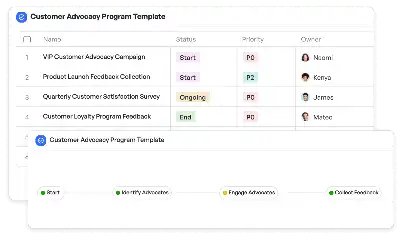Heat Stress Index Modeling Protocol
Achieve project success with the Heat Stress Index Modeling Protocol today!

What is Heat Stress Index Modeling Protocol?
The Heat Stress Index Modeling Protocol is a specialized framework designed to evaluate and mitigate the risks associated with heat stress in various environments. Heat stress occurs when the body is unable to cool itself adequately, leading to potential health risks such as heat exhaustion or heat stroke. This protocol is particularly critical in industries like construction, agriculture, and manufacturing, where workers are often exposed to high temperatures. By utilizing this protocol, organizations can systematically assess environmental factors, human physiological responses, and risk levels to implement effective preventive measures. The Heat Stress Index Modeling Protocol incorporates scientific methodologies and industry-specific standards to ensure comprehensive risk management.
Try this template now
Who is this Heat Stress Index Modeling Protocol Template for?
This Heat Stress Index Modeling Protocol template is ideal for safety managers, industrial hygienists, and HR professionals in industries where heat exposure is a significant concern. Typical roles include construction site supervisors, agricultural field managers, manufacturing plant safety officers, and event organizers for outdoor activities. Additionally, emergency response teams and sports coaches can benefit from this protocol to ensure the safety of their teams during high-temperature conditions. The template provides a structured approach to identify risks, implement controls, and monitor outcomes, making it indispensable for professionals tasked with safeguarding health and productivity in heat-stress-prone environments.

Try this template now
Why use this Heat Stress Index Modeling Protocol?
Heat stress poses unique challenges that require targeted solutions. For instance, construction workers often face prolonged exposure to direct sunlight, increasing their risk of dehydration and heat-related illnesses. The Heat Stress Index Modeling Protocol addresses these challenges by providing tools to measure environmental factors like temperature, humidity, and radiant heat. It also includes guidelines for assessing human factors such as hydration levels and acclimatization. In agricultural settings, the protocol helps managers schedule work shifts to avoid peak heat hours, reducing the risk of heat exhaustion. For emergency responders, the protocol offers strategies to monitor heat stress during high-intensity operations. By using this template, organizations can proactively mitigate risks, ensure compliance with safety regulations, and protect their workforce from the adverse effects of heat stress.

Try this template now
Get Started with the Heat Stress Index Modeling Protocol
Follow these simple steps to get started with Meegle templates:
1. Click 'Get this Free Template Now' to sign up for Meegle.
2. After signing up, you will be redirected to the Heat Stress Index Modeling Protocol. Click 'Use this Template' to create a version of this template in your workspace.
3. Customize the workflow and fields of the template to suit your specific needs.
4. Start using the template and experience the full potential of Meegle!
Try this template now
Free forever for teams up to 20!
The world’s #1 visualized project management tool
Powered by the next gen visual workflow engine




